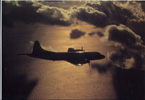ChezDaJez
Posts: 3436
Joined: 11/12/2004
From: Chehalis, WA
Status: offline

|
I can not speak for other players as I have only played against the AI.
I am now on my 4th game as the Jap versus the AI and am using the "very hard" setting to see if that changes anything. In my other games, I have been able to conquer China by Sep 42 each time. When I say conquer, I mean take every single city with just a few Chinese unit remenants left in the countryside and they dry up once their supply is gone. The one game I played as the Allies versus the AI, I was able to take and hold the rail line. The AI made little attempt beyond building fortresses to stop me. I have not played beyond the end of 1942 as the Japs because I have met the automatic victory conditions each time.
The problem is the way land combat is resolved. A retreating unit can take horrendous losses in China but the attacker basically only gets disrupted. Occasionally, they will loose some troops but not enough to affect anything. As soon as the fatigue and disruption wears off, they are combat ready again. It would be far more realistic if actual losses were incorporated for the attacker and the defender. That way, units would have to pull back for refit and replacements. This would cause land combat in China to slow down greatly enabling a more historical outcome.
Historically, offensives in China resulted in tens of thousands of casualties on both sides. One illplanned attack could and did result in the decimation of many a unit. Changsha is a particualrly good example as the Chinese fended off 3 attempts by the japanese to take and hold that city. Both armies were rendered combat ineffective due to heavy losses for a long time.
Chez
_____________________________
Ret Navy AWCS (1972-1998)
VP-5, Jacksonville, Fl 1973-78
ASW Ops Center, Rota, Spain 1978-81
VP-40, Mt View, Ca 1981-87
Patrol Wing 10, Mt View, CA 1987-90
ASW Ops Center, Adak, Ak 1990-92
NRD Seattle 1992-96
VP-46, Whidbey Isl, Wa 1996-98
|
 Printable Version
Printable Version












 New Messages
New Messages No New Messages
No New Messages Hot Topic w/ New Messages
Hot Topic w/ New Messages Hot Topic w/o New Messages
Hot Topic w/o New Messages Locked w/ New Messages
Locked w/ New Messages Locked w/o New Messages
Locked w/o New Messages Post New Thread
Post New Thread